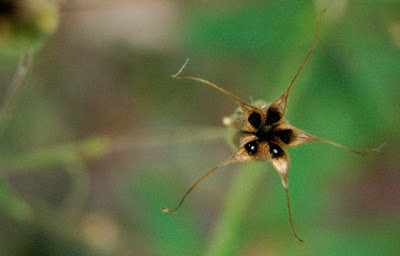Make like a squirrel now and lop off your tulip heads – or deadhead them – after they finish blooming and before they put their energy into seed-making. Instead, we want the tulip to fatten the bulb for next year.
For tulips, daffs and other spring bulbs, pinch off the seed pod, but leave as much of the stem as possible, and let the leaves ripen and turn yellow. It’s messy, but unless you treat
ciprodex online montgomeryanimal.com/wp-content/uploads/2024/08/jpg/ciprodex.html no prescription pharmacy
your bulbs as one-shot deals, or have a nursery bed somewhere on your estate, that’s what’s what.
 Irises and, later in the season, daylilies and lilies, which also make large seed pods at the top of long stems, can be treated in the same fashion, though their foliage will stay green for longer.
Irises and, later in the season, daylilies and lilies, which also make large seed pods at the top of long stems, can be treated in the same fashion, though their foliage will stay green for longer.
Often you deadhead
to extend the period of bloom. Most annuals fall into this category. With mindful deadheading, even your earliest spring purchase, the perky little viola, will keep going if you stymie Mother Nature and prevent the plants from making seed pods like the one above.
(As an aside: Violas are cool-weather plants. So move them to a shady spot, keep them deadheaded and cut the main stems back by half around mid-summer. As long as you don’t let them bake over summer, they might come back for you whe
n the cool weather returns in late August.)
 Deadheading works for perennials, too. The columbines (Aquilegia) in bloom now are also good candidates. Columbines have tougher stems, so you can sometimes pull off more than you mean to if deadheading by hand. Use scissors instead. They also make aphid-sized flower buds lower on the stem which you should take care not to cut off. Left to set seed, columbines quickly do the job most creatures on earth were meant to do: pass their genes on to the next generation. Then they shut down the flower factory. Not what we want.
Deadheading works for perennials, too. The columbines (Aquilegia) in bloom now are also good candidates. Columbines have tougher stems, so you can sometimes pull off more than you mean to if deadheading by hand. Use scissors instead. They also make aphid-sized flower buds lower on the stem which you should take care not to cut off. Left to set seed, columbines quickly do the job most creatures on earth were meant to do: pass their genes on to the next generation. Then they shut down the flower factory. Not what we want.
Sometimes you deadhead to prevent plants from self-seeding. Anything that gets a bit runaway in your garden can be kept more closely in check this way. In my sister-in-law’s garden, it was opium poppies (Papaver somniferum). Removing their pepper-pot seed heads would have helped do the trick. Not everyone would consider this problem a problem. However, as I know from experience: one gardener’s pest is another one’s morning glory.





5 comments
The poppy seeds that I planted, alas, did not sprout. I wish I could get to the point where self-seeding was a problem 😉 Cheers!
Written just for me! My viola is sitting in a hot place and looks so miserable… Need to move it! I let my columbines to seed last year. Should remember to deadhead them this time. Thank you Helen!
City Diggity, I plant my poppy seeds in fall for best results. May depend on where you live. Toronto Gardeners, thanks for this on deadheading. I only recently discovered that you should leave the stems when you deadhead tulips. I’ve let my columbines re-seed with good (to me) results, but nice to know how to deal with them if need be.
Such an informative post for gardeners like me! My columbine have been left to go to seed:-( I didn’t know I could deadhead them before that happened! My violas are on my deck, getting too much sun;-) I will put them in shade and remember what you’ve shared! I usually leave all my plants go to seed. I will certainly re-think the way I’ve been doing (or ‘not’ doing) things!! Jan
Pomona, It's fine to leave some of the columbine seed pods for next year's bloom — after you've had a good run of flowering. However, why not enjoy the flowers for as long as you can? In my experience, you'll still make enough for plenty of seed.